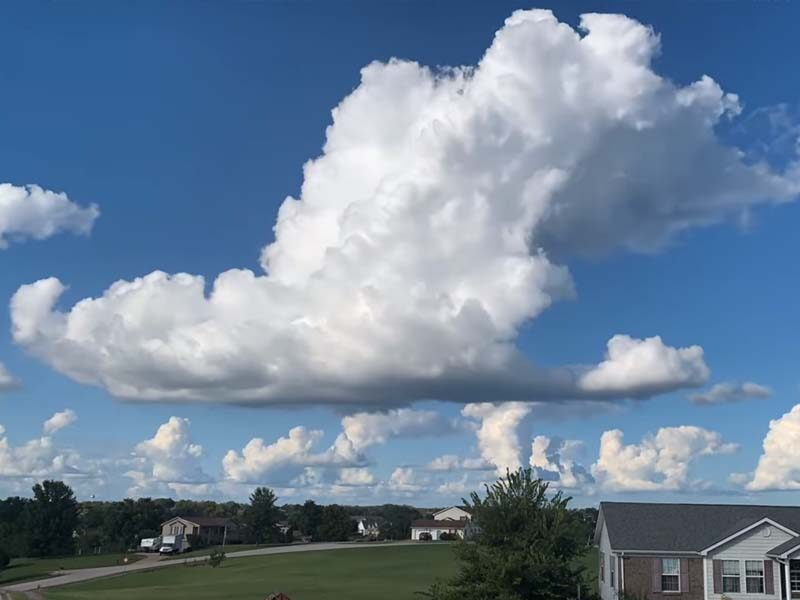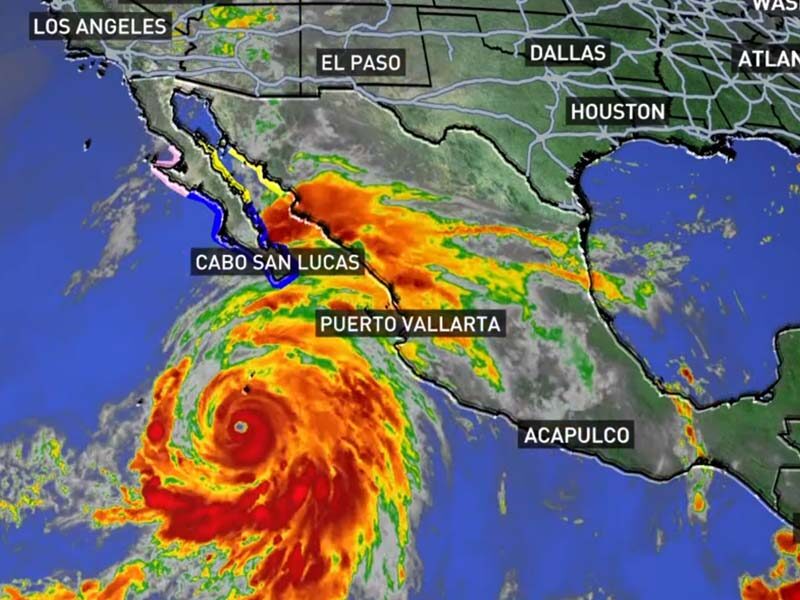When it comes to bad weather, knowing which direction it arrives from can be crucial in predicting and preparing for any potential hazards. Understanding weather patterns, factors affecting weather direction, regional differences, as well as tools and techniques for prediction, can all help to keep us safe during any adverse weather conditions. Let’s take a closer look at each of these elements.
Understanding Weather Patterns
Weather patterns are cyclical and can be influenced by a range of factors such as wind, ocean currents, and topography. Understanding these factors can provide insight into why bad weather most commonly arrives from certain directions.
The Role of Prevailing Winds
Prevailing winds are the dominating winds in a particular region and can be a significant factor in determining the direction of bad weather. In the Northern Hemisphere, weather typically moves from west to east due to the prevailing westerly winds, while the opposite is true for the Southern Hemisphere.
The Impact of Ocean Currents
Ocean currents can also influence weather patterns. Warmer water from the equator, for example, can create low-pressure systems that cause storms to form, which can then move towards cooler regions.
The Influence of Topography
The elevation and physical features of a region can also have an impact on weather patterns. Mountain ranges, for example, can create specific weather patterns by causing air currents to rise and cool, which can then lead to the formation of clouds or storms.
Factors Affecting the Direction of Bad Weather
Bad weather can be a source of anxiety and inconvenience for many people, but understanding the factors that affect its direction can help us prepare and stay safe. In addition to the Coriolis effect, high and low-pressure systems, and seasonal variations, there are many other factors that can impact the direction of bad weather.
The Coriolis Effect
The Coriolis effect, caused by the Earth’s rotation, can also affect the direction of bad weather. The Coriolis effect is a force that acts on objects that are moving in a rotating frame of reference, such as the atmosphere. In the Northern Hemisphere, weather systems tend to rotate counterclockwise due to the Coriolis effect, while in the Southern Hemisphere, the opposite is true. This means that storms and other weather patterns can be deflected or redirected based on their location and the direction of the prevailing winds.
For example, a hurricane that forms in the Atlantic Ocean will typically move westward due to the prevailing easterly winds. However, as it approaches the United States, the Coriolis effect will cause it to turn northward, potentially bringing it into contact with the eastern seaboard.
High and Low-Pressure Systems
Bad weather is often associated with low-pressure systems, which can form due to a variety of factors such as temperature changes. Low-pressure systems are characterized by rising air, which can lead to cloud formation and precipitation. High-pressure systems, on the other hand, can help to keep bad weather at bay, acting as a barrier or buffer.
When a low-pressure system encounters a high-pressure system, the two can interact in complex ways, leading to changes in wind direction and speed. These interactions can sometimes result in severe weather events such as thunderstorms, tornadoes, and hurricanes.
Seasonal Variations
Seasonal variations can also affect the direction of bad weather. In general, the movement of storms and other weather patterns is influenced by the prevailing winds, which can vary depending on the time of year and the location. For example, in the United States, summer storms tend to move from west to east, while winter storms tend to move from the northwest to the southeast.
These seasonal variations can be influenced by a variety of factors, including the position of the jet stream, the temperature of the ocean, and the location of high and low-pressure systems. By understanding these factors, meteorologists and other weather experts can make more accurate predictions about the direction and intensity of bad weather, allowing us to prepare and stay safe.
Regional Differences in Weather Direction

Weather patterns play a significant role in our daily lives, affecting everything from our mood to our activities. Understanding the differences in weather direction across regions can help us prepare for what’s to come and appreciate the unique beauty of each location.
North America’s Weather Patterns
North America is a vast continent with diverse weather patterns that can vary considerably depending on the region. In the Pacific Northwest, for example, bad weather often arrives from the west due to Pacific storms, while in the Midwest, summer storms can move from west to east across the Great Plains.
The Northeast region of the United States experiences a humid subtropical climate, with hot summers and cold winters. The area is also prone to nor’easters, which are powerful storms that bring heavy snow, rain, and strong winds.
The Southwestern region of the United States is known for its hot and dry climate, with occasional monsoon storms during the summer months. The area is also prone to wildfires due to the dry conditions.
European Weather Patterns
Western Europe experiences weather patterns that are influenced by the Gulf Stream, which brings warm water from the Gulf of Mexico to the region. This can lead to more moderate temperatures and unique weather patterns that are different from other parts of Europe.
The Mediterranean region of Europe experiences hot and dry summers, with mild and rainy winters. The area is also prone to occasional thunderstorms and flash floods.
Northern Europe, on the other hand, experiences a maritime climate with mild temperatures and frequent rainfall throughout the year. The area is also prone to strong winds and occasional snowfall during the winter months.
Asian Weather Patterns
Asia is home to some of the most diverse weather patterns in the world due to its size and unique topography. In India, for example, monsoon winds bring heavy rains in the summer months, while regions like Siberia experience extreme cold during the winter.
The Southeast Asian region experiences a tropical climate with high humidity and frequent rainfall throughout the year. The area is also prone to tropical storms and typhoons during the monsoon season.
The Middle East region experiences a desert climate with hot and dry summers, and mild winters. The area is also prone to sandstorms due to the dry conditions.
Southern Hemisphere Weather Patterns
Weather patterns in the Southern Hemisphere are often influenced by the trade winds and ocean currents. In Australia, for example, bad weather often moves from the west towards the east due to prevailing westerly winds.
The South American region experiences a diverse range of weather patterns, from the tropical climate of the Amazon Rainforest to the arid climate of the Atacama Desert. The area is also prone to occasional earthquakes and volcanic eruptions.
The African continent experiences a tropical climate in the equatorial region, with a desert climate in the northern and southern regions. The area is also prone to occasional droughts and dust storms.
Overall, understanding regional weather patterns can help us prepare for what’s to come and appreciate the unique beauty and challenges of each location.
How to Predict and Prepare for Bad Weather
Bad weather can be unpredictable and dangerous, causing damage to property and even loss of life. However, with the right tools and techniques, we can predict and prepare for bad weather, reducing its impact and keeping ourselves and our communities safe. In this article, we will discuss some of the most effective ways to predict and prepare for bad weather.
Meteorological Tools and Techniques
Meteorological tools such as weather balloons, weather radar, and satellite imagery can be used to track bad weather and predict its path. These tools can be especially useful for meteorologists, emergency services, and farmers, giving them time to prepare and take appropriate action. Weather balloons, for example, can provide data on temperature, humidity, and wind speed at different altitudes, helping meteorologists to create more accurate weather models.
Weather radar uses radio waves to detect precipitation and measure its intensity and movement. This information can be used to create weather maps and predict the path of storms. Satellite imagery can also be used to track storms, hurricanes, and other severe weather events, providing valuable data on their size, speed, and intensity.
Weather Forecasting Apps and Websites
With the rise of smartphones and the internet, weather forecasting apps and websites have become an essential tool for many people. These apps provide real-time weather updates, alerts, and forecasts, helping users to plan their day and stay safe during adverse weather conditions. Some popular weather apps include AccuWeather, The Weather Channel, and Dark Sky. These apps provide detailed information on temperature, precipitation, wind speed, and other weather conditions, as well as alerts for severe weather events.
Weather websites such as Weather.com and NOAA.gov also provide real-time weather updates and forecasts, as well as educational resources on weather patterns and phenomena. These websites can be particularly useful for people who live in areas prone to severe weather, such as hurricanes, tornadoes, and blizzards.
Tips for Staying Safe During Bad Weather
Finally, it’s important to know how to stay safe during bad weather. This can include having an emergency kit, staying informed through weather alerts and updates, and avoiding outdoor activities during dangerous conditions. An emergency kit should include items such as a flashlight, batteries, a first aid kit, and non-perishable food and water. It’s also important to have a plan in place for evacuation or sheltering in place during severe weather events.
Staying informed through weather alerts and updates can help you make informed decisions about whether to stay indoors or evacuate. Many weather apps and websites provide alerts for severe weather events, such as tornadoes, hurricanes, and flash floods. It’s also a good idea to have a battery-powered radio or other device to receive emergency alerts if the power goes out.
Avoiding outdoor activities during dangerous conditions can also help keep you safe. If you must be outdoors during bad weather, be sure to dress appropriately and take precautions such as staying away from downed power lines and avoiding flooded areas.
By knowing how to predict and prepare for bad weather, and by taking steps to stay safe, we can minimize the impact of severe weather events and protect ourselves and our communities.
Conclusion
Understanding the direction of bad weather can provide valuable insights into weather patterns and how to predict and prepare for potential hazards. By considering factors such as prevailing winds, ocean currents, topography, and weather systems, we can gain an understanding of why bad weather commonly arrives from certain directions. Armed with this knowledge, and with the use of modern tools and techniques, we can stay informed and stay safe during adverse weather conditions.
FAQ
No, bad weather does not always come from the same direction. Weather patterns can vary significantly based on geographical location, prevailing winds, and the type of weather system in play. Thus, it’s important to analyze specific regional and seasonal patterns to determine the prevalent direction from which bad weather approaches.
Yes, there are general trends in weather patterns that can provide insights into the direction of bad weather. For example, in many regions, storms tend to move from west to east due to the prevailing westerlies—a global wind pattern that typically blows from the west to the east. However, it’s crucial to note that local and regional factors can influence these patterns, leading to variations in different areas.
Absolutely. Topography plays a significant role in altering the direction from which bad weather approaches. Mountains, hills, and other geographical features can disrupt the flow of weather systems, causing them to change direction or intensify. This phenomenon, known as orographic lifting, can result in localized variations in weather patterns.
To determine the prevailing weather patterns in your area, you can consult historical weather data provided by meteorological organizations. This data often includes information on wind direction, storm tracks, and seasonal weather patterns. Local meteorologists and weather experts can also provide valuable insights into the specific weather patterns of your region.
Yes, there are various tools and resources available to track weather patterns. Online platforms and mobile applications provide access to real-time weather information, radar imagery, and forecasts. These resources can help you stay informed about approaching weather systems, regardless of the direction from which they originate.
Yes, bad weather can change direction suddenly due to the influence of various meteorological factors. Weather systems can be affected by the interaction of air masses, the development of new weather systems, or the influence of local features. It’s important to stay updated with the latest weather forecasts to be prepared for any unexpected changes in weather direction.
Yes, the time of year can have an impact on the direction from which bad weather arrives. Seasonal changes in atmospheric conditions and prevailing wind patterns can influence the direction of weather systems. For example, tropical storms and hurricanes tend to follow specific tracks during specific seasons. Understanding the seasonal variations can help anticipate the likely direction of bad weather.


